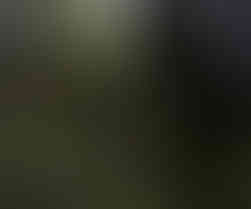Blustery Day Badger
- Martin Truefitt-Baker, Art

- Aug 5, 2023
- 3 min read
High up on the hillside behind my cottage there is a badger set. It's near to a small group of very old beech trees that stand very tall among some old whitebeam and hawthorns. The colours in the autumn are amazing.
I've set this print early on a blustery autumn day. Trying to get the feeling of the badger being buffeted and ruffled by the cold wind. The greys of the badger work nicely with the autumn colours.

I've used this orange/gold and grey combination before with the Winter Fox that turned out to be a very successful print. This print also has those nice crinkled beech leaves, that were such fun to cut for the Bluebell Wood Fox. The Hawthorn leaves are a first for me on this print. A less uniform shape and set of tones but I think I've got them right. That is sugarloaf Mountain in the background, just outside Abergavenny.
The idea for the print came from a walk up in the woods in the secret valley in the late autumn. A very windy but bright day, i think at the start of November. I don't tend to go up there very much in the summer. The trees obscure many of the fantastic views, although it's still nice. The big beech trees were damaged in a big storm a while ago and there are still some massive boughs lying at fantastic angles on the ground. In the wet the tree trunks reflect a blueish light.
I made the first full sketch of the composition fairly quickly.

It's best not to be too precise or precious when you start designing, otherwise you become reticent to change things even if you aren't sure they are right and experiment with alternatives. So I use cheap paper to draw on and thin computer paper to make the painted design. The thin paper has other advantages, it's easy to bend and cut and to get under the scanner, so that elements can be duplicated, reversed and changed in size.

The design stage took over three weeks, I then like to leave things for a couple of days to check if there are any changes needed. I had planned on 5 layers of cutting and printing for this reduction linocut but I ended up with six. The leaves and the fur needed a bit of colour separation. I ended up making what is called a partial roll, where I just printed the orange leaves. These were then cut away and the grey of the badger's fur was printed next. I don't usually use this technique as I like a looser use of colour (take a look at the Bluebell Wood Fox) but I felt I needed a fairly defined edge to the colours. An even more exact method to achieve this is to use two lino plates as in my Hares in Meadow Cranesbill print https://www.truefitt-baker.co.uk/post/hares-and-meadow-cranesbill
I've put together a one minute video of the stages in creating this print over the two weeks of printing. I should have included more of the actual cutting for each layer but I forgot to film it. For the first three layers it took about a day each time.
The print is dry and was editioned yesterday. I'm very pleased that I've managed to keep 50 out of the 70 half sheets of Somerset Satin printing paper that I started with. 35 whole (expensive)sheets of paper! Just fixing the registration tabs (three to each) takes time.
I worked it out, that's six layers of cutting, which makes 420 rounds of rolling up the lino (usually with two or three colours each time), registering the paper and running the lot through the press. I'm lucky to get 5 sheets inked and printed in an hour. So overall just the printing cold be taking me 90+ hours. I need a rest!























Comments